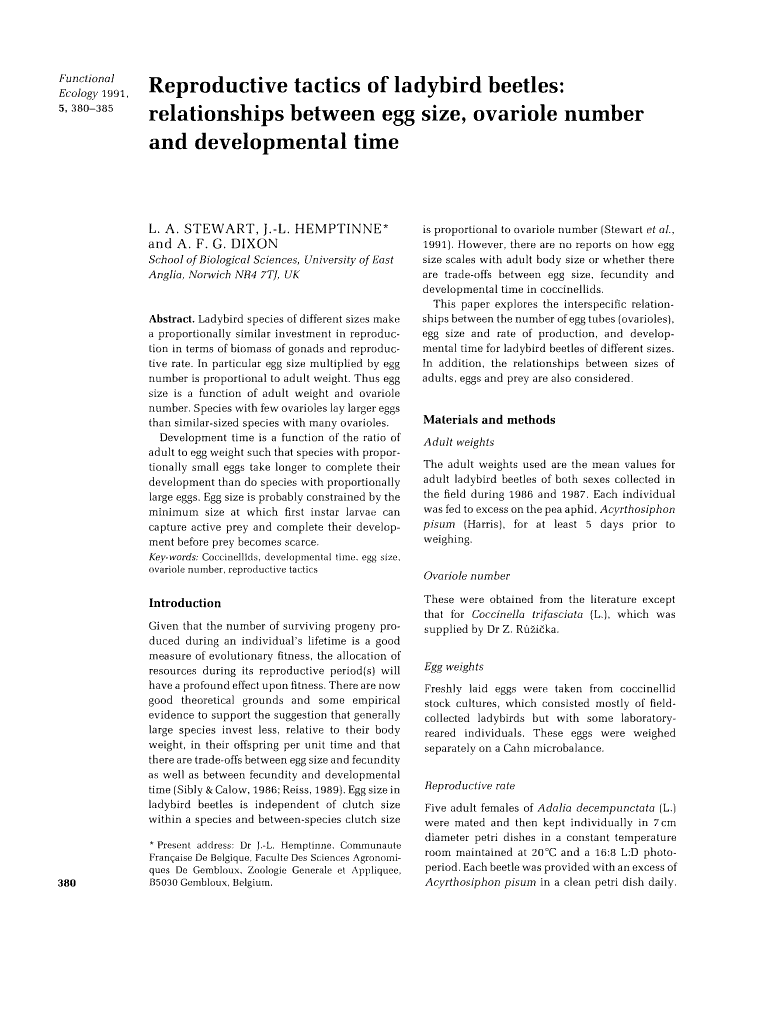You are viewing the first page/citation. Full-text
access may be available if you are affiliated with a participating library or
publisher. Check access
options or login
if you have an account.
Reproductive Tactics of Ladybird Beetles: Relationships
Between Egg Size, Ovariole Number and Developmental Time
Functional Ecology
Vol. 5, No. 3 (1991), pp. 380-385
(article consists of 6 pages)
Vol. 5, No. 3 (1991), pp. 380-385
(article consists of 6 pages)
Published by: British
Ecological Society
Stable URL:
http://www.jstor.org/stable/2389809

Functional Ecology © 1991 British Ecological Society
